Contexture
Quel est le nombre optimal de fils pour les articles en duvet et en plumes ? Comment la contexture affecte-t-elle la qualité, l’aspect et le prix d'un produit? Lisez ce qui suit pour trouver les réponses aux questions les plus courantes sur la contexture!
Commençons par les bases. Qu'est-ce que la contexture?
Réponse courte : La contexture indique nombre total de fils au pouce carré d’un tissu.
Réponse longue: Elle se calcule en additionnant les fils disposés de gauche à droite (trame) aux fils allant de haut en bas (chaîne). Plus le nombre de fils est élevé, plus les fils sont fins et, par conséquent, plus le tissu est doux et lisse au toucher. Les tissus à contexture élevée sont généralement plus chers que les tissus à contexture faible.

Un nombre de fils plus élevé signifie-t-il un tissu de meilleure qualité?
Réponse courte: Pas forcément.
Réponse longue: Lorsque nous parlons de contexture des produits de duvet et de plumes, nous faisons référence au nombre de fils de l'extérieur. Une contexture très élevée n'est pas idéale pour plusieurs raisons. Prenons par exemple une contexture de 1000 fils. Pour faire tenir 1000 fils dans un pouce carré, il faudrait des fils extrêmement fins, ce qui donnerait un tissu qui n'est pas très résistant ou durable.
Un produit présenté comme ayant une contexture de 1000 fils est probablement à double épaisseur. Cela signifie que chaque fil est en fait constitué de deux fils tressés ensemble. Par conséquent, le nombre de fils est techniquement de 500 (un peu tordu, non?!) Le tissu double épaisseur de 1000 fils est lourd et ne respire pas bien, ce qui le rend moins adapté aux produits de duvet et plume.

Quel est le nombre idéal de fils pour les articles en duvet et en plumes?
Réponse courte: Ça dépend.
Réponse longue: Les tissus à une seule couche, à faible nombre de fils, sont plus légers, ce qui permet au duvet de se gonfler correctement. Une couette en duvet ou en plumes doit avoir une enveloppe extérieure avec un nombre de fils compris entre 233 et 500. Les enveloppes dont le nombre de fils est inférieur à 233 peuvent laisser fuir le remplissage, tandis que celles dont le nombre de fils est supérieur à 500 risquent d'être trop fragiles (si elles sont à simple pli) ou trop lourdes (si elles sont à double pli).
Le choix du nombre de fils dépend de ce qui est le plus important pour vous.
Une contexture de 300 à 500 fils pourra mieux respirer, sera plus douce et moins bruyante.
Les tissus à faible nombre de fils, comme le 233, sont plus durables et plus économiques. Les enveloppes extérieures à faible nombre de fils sont plus bruyantes, car elles sont fabriquées avec un fil plus épais et plus grossier. La bonne nouvelle est que les enveloppes de couette s'assouplissent avec le temps, devenant moins amidonnées et moins bruyantes (tout comme votre jean préféré !)

Vous avez d'autres questions sur la contexture? Soumettez un commentaire ci-dessous !
Illustrations par Amanda Nguyen
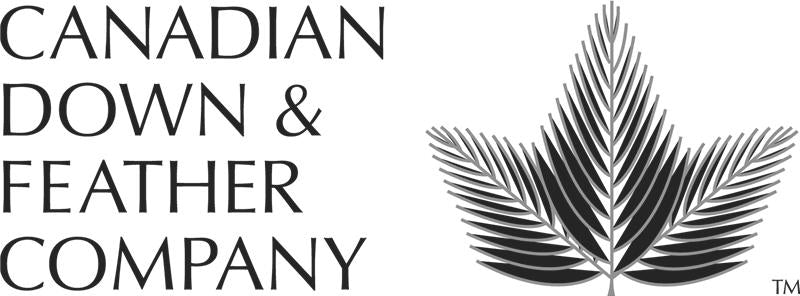
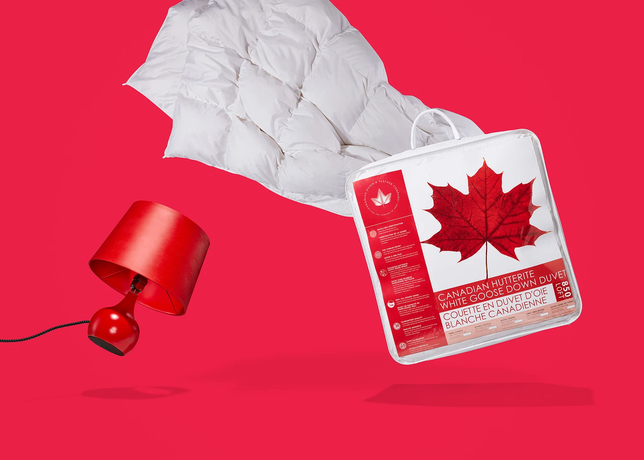
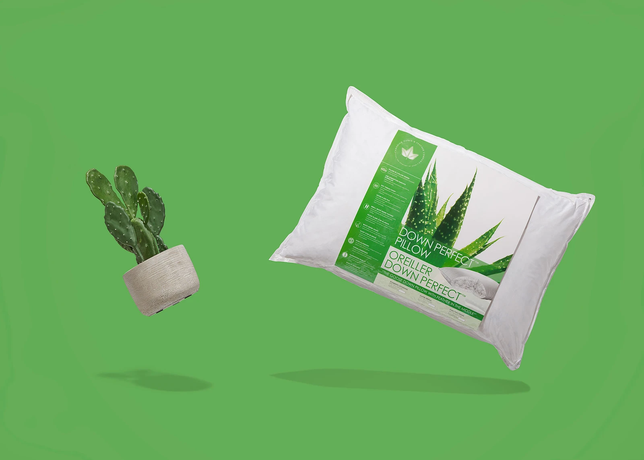
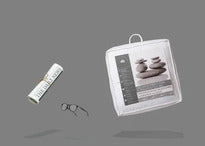
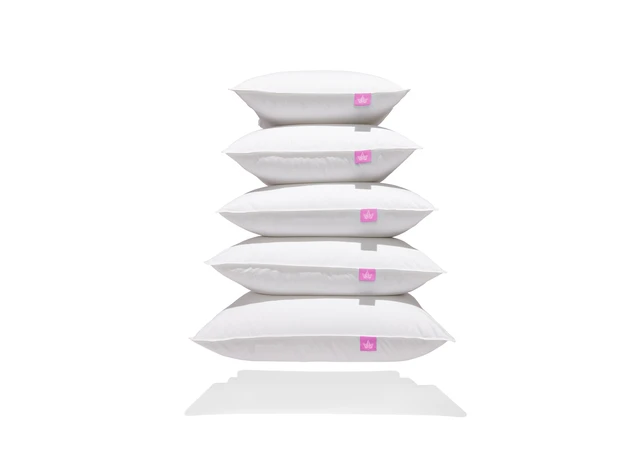
6 commentaires
Bonjour,
J’aimerais une couette king size toute saison avec un pouvoir de gonflement supérieur. Présentement jai un lit queen. J’aimerais qu’est-ce que vous pouvez me suggérer car sur le marché des couettes il y a tellement de possibilités mais je me perds. Merci !
Marie-josée Cyr
Bonjour Marie-Josée,
Je voudrais clarifier la signification du pouvoir gonflant. Un pouvoir gonflant élevé signifie un duvet de meilleure qualité. Mais cela ne signifie pas que la couette est plus moelleuse ou plus chaude qu'une couette à faible pouvoir gonflant. C'est une erreur fréquente ! Un duvet à fort pouvoir gonflant est plus isolant, ce qui signifie qu'il faut moins de duvet pour atteindre le niveau de chaleur souhaité. Par conséquent, les couettes à fort pouvoir gonflant sont plus légères que celles à faible pouvoir gonflant, mais même les couettes en duvet à faible pouvoir gonflant restent considérées comme relativement légères par rapport aux autres types de garnissage. N'importe quel type de duvet peut être utilisé pour créer n'importe quel niveau de chaleur ; la quantité requise varie simplement. Je vous conseille de commencer par déterminer le niveau de chaleur dont vous avez besoin en fonction de la température de votre pièce. Si votre pièce est à plus de 22 °C, le poids été est idéal. Le poids normal est recommandé pour 19-21 °C, toutes saisons pour 16-18 °C, et hiver pour 15 °C ou moins. Vous pouvez consulter notre tableau comparatif des couettes pour connaître le poids de garnissage souhaité. Ensuite, tout dépend de votre budget pour le pouvoir gonflant et le nombre de fils, et si vous êtes prêt à payer plus cher pour du duvet d'oie. Plus le nombre de fils est élevé, plus l'enveloppe est douce et silencieuse. Si c'est important pour vous, vous pouvez envisager d'investir dans un nombre de fils plus élevé. En général, il n'est pas nécessaire d'acheter le produit le plus gonflant ni le plus cher. À moins de rechercher un produit très léger ou une enveloppe très douce, un produit au pouvoir gonflant plus faible vous conviendra parfaitement.
Canadian Down & Feather Company
Looking for a queen all season down duvet that isn’t heavy. I’m a warm person so I don’t want lots of warmth in the cover. Thanks for any help you can provide.
Susanne Racine
Hi Susanne, If you’re looking for a lightweight duvet, I recommend a down duvet! Down is a very high performance material, so just a little bit of fill provides a lot of warmth! This means down duvets are generally very light and airy. If you’re warm, you may wan to opt for Summer Weight. What we call All Season Weight is warm enough for cool room temperatures (16-18C), so may be too warm for your needs. You can see which duvets come in Summer Weight on our product comparison chart!
Canadian Down & Feather Company
I have two down perfect pillows I enjoy. I’m now getting the one hundred percent down pillow in firm what should I expect from my new pillows and my down perfect pillows?
Anne Feltz
Hi Anne, The down pillows you purchased will be much more soft, sinky, and malleable than the Down Perfect. Down is made up of delicate, fluffy clusters which don’t have the same heft as feather. Feather is what provides support in pillows!
Canadian Down & Feather Company
Do you come across people who find they are allergic to a down duvet?
Hilda Fletcher
Hi Hilda, Occasionally, yes, but true down and feather allergies are quite rare. The vast majority of allergy sufferers are sensitive to dirt, dust, bacteria or other allergens that can collect on down and feather. However, all of the down and feather we use has been rendered hypoallergenic or ‘super clean’ through the cleaning process and is generally fine for most people.
Canadian Down & Feather Company
This is the first time I am considering down duvet. This is due to the higher costs on down filled content and the lack of knowledge to shop for the most ideal one, in short for fear of making mistakes. Please help me to find the most ideal down duvet: one that is soft, light, not noisy and warm/cool year round. I have a double bed, I would like to order a king size that would give me more coverage. I am excited with your sale, hopefully I can find the perfect cover with your help. most importantly, are your products returnable with full refund?
Josephine Lo
Hi Josephine, All down duvets are lightweight. This is because down is such a powerful insulator - a little bit of fill creates a lot of warmth! The filling of any down duvet is soft, because down is soft by nature. However, the fabric of the shell may not be soft if it is low thread count. For soft, quiet fabric, look for higher thread counts, above 300 (ideally 400+). You can find all of our down duvets and compare them by thread count on the Product Comparison Chart.
It is tricky to find a duvet that is both warm and cool. It can’t change its insulating properties depending on the outside temperature! Check the product description to see which weight is best for your room temperatures. If your room temperatures fluctuate significantly, I recommend catering to the warmest temperature. It’s easy enough to add an extra blanket on cold days, but very difficult to sleep if you’re too hot!
King size will be quite large on a double bed, with a lot of overhang! I would imagine that going up to a Queen size would be large enough, but totally your call! You may just want to check the product dimensions just in case. You can return any unused product for a refund within 30 days. You can read more on our Returns & Refunds page.
Canadian Down & Feather Company
Thank you. Great info😄👍🏼
G. Richer
Laisser un commentaire
Ce site est protégé par hCaptcha, et la Politique de confidentialité et les Conditions de service de hCaptcha s’appliquent.